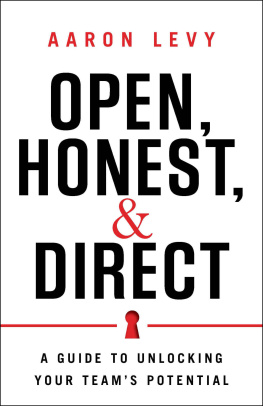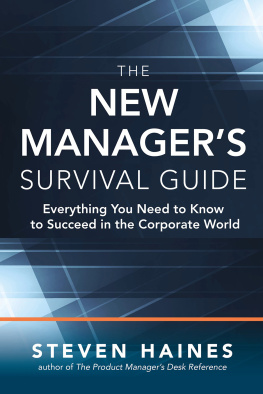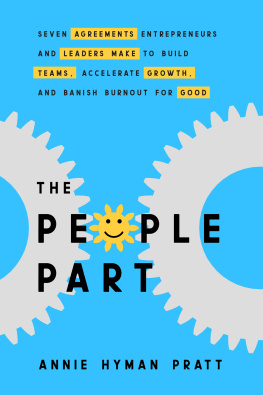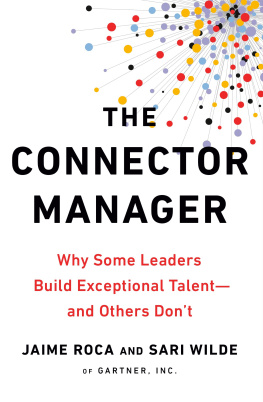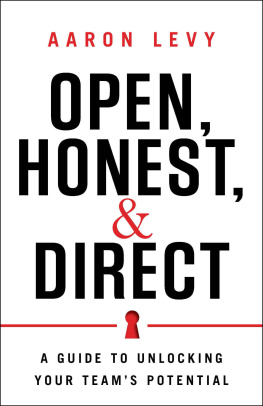
This publication is designed to provide accurate and authoritative information in regard to the subject matter covered. It is sold with the understanding that the publisher and author are not engaged in rendering legal, accounting, or other professional services. Nothing herein shall create an attorney-client relationship, and nothing herein shall constitute legal advice or a solicitation to offer legal advice. If legal advice or other expert assistance is required, the services of a competent professional should be sought.
Published by River Grove Books
Austin, TX
www.rivergrovebooks.com
Copyright 2019 Aaron Levy
All rights reserved.
Thank you for purchasing an authorized edition of this book and for complying with copyright law. No part of this book may be reproduced, stored in a retrieval system, or transmitted by any means, electronic, mechanical, photocopying, recording, or otherwise, without written permission from the copyright holder.
Distributed by River Grove Books
Design and composition by Greenleaf Book Group
Cover design by Greenleaf Book Group
Publishers Cataloging-in-Publication data is available.
Paperback ISBN: 978-1-63299-237-6
Hardcover ISBN: 978-1-63299-239-0
eBook ISBN: 978-1-63299-238-3
First Edition
This book is dedicated to my wife, business partner, and best friend, Kim. None of this would be possible without her energy, passion, and critical eye.
CONTENTS
Introduction
ATTRACT AND RETAIN TOP TALENT
T hink of the last time you tried to roll out a new process to your team. You delivered a clean presentation that was simple and easy to digest. You gave your team time to ask questions and gain clarity. You even followed up with an email recapping what was expected of them. You did everything you could to provide the knowledge, believing it would lead to a smooth and intuitive rollout.
But why, only a few days later, are only a handful of people following the new process? Generating a change in the behavior of your people requires more than just telling them what to do and how to do it; it requires them to take action. Its the same reason only 20% of people ever accomplish their New Years resolutions.people know better, do they not do better? Its not that people dont know what to do; the problem is that they dont take action.
We tend to believe knowledge leads directly to action; that is, someone knows what to do, then they do it. I find this to be a fallacy in our understanding of human behaviorand the reasons for this are fascinating.
WHY WE DO WHAT WE DO
To better understand the knowledge-to-action gap, I took a deep dive into the science of human behavior some years ago. I wanted to find out why people do what they do and what triggers some people to take action in their lives while others do not. I looked back to the history of Homo sapiens, trying to understand where our instincts originated. I read philosophy to better appreciate the perspective on the human condition from generations past. I researched the perplexities of the human brain and cognitive biases from behavioral economists like Daniel Kahneman and Amos Tversky and looked at the importance of intrinsic motivation in driving human behavior from the likes of Ed Deci and Richard Ryan. I explored how social constructs nudge our decision making in one direction or another. And I even looked at casinos and grocery stores to understand how space designthe environment youre surrounded bycan influence your decisions.
All of this research helped paint a picture of why we do what we do. But it wasnt enough. I really wanted to know how this worked in real life, with real people. I was fortunate to be the first employee at a health and well-being coaching and education organization right out of college, led by two physicians who viewed medicine from a whole new perspective. Instead of seeking to fix the sick, they wanted to see how we could look upstream at the problem; they dove into the question of human behavior with the very same curiosity I had. As the director of education and delivery at that organization, I had the perfect opportunity to test out these theories in real life.
Our client base gave me the chance to work with thousands of leaders from all over the country, across varied socioeconomic backgrounds, generations, and denominations. It became my playground to explore behavior change. I started testing what worked to trigger change in peoples livesfrom yearlong coaching, weeklong training programs, and experiential workshops to lunch-and-learns, webinars, and even animated videos.
We tried everything, and through these mini experiments, I discovered two key insights that made a profound impact on my future, ultimately leading me here.
Discovery 1
I found what really works to drive a human being from knowledge to action and how to do this rapidly and effectively. All of the work Ive done with leaders since has been based on this key learning and even informs how Ive laid out this book for you to read. I care more about you taking action as a result of reading this book than anything else, so the book is designed in a way for you to do, not to simply know.
Discovery 2
In my work with thousands of leaders, I noticed what gives me the most joy is seeing the light switch go on for a leader. And once the light turns on, Im awed at the way these leaders quickly take action, not just in that one area but also across various other domains in their lives and business. I uncovered how far-reaching and profound one intentional, consistent change can be on a leader and a companys performance.
The feeling of helping someone tap into their potential invigorates me, and even now, writing about it, I feel my heart beating faster with energy and excitement. This clarity shifted my perspective of the world and my role within it. I realized that helping people unlock their potential is what I love doing. Its what fills me up. And my eyes immediately opened to the problems and possibilities around me. I began asking some different questions of myself.
How can I serve more people in unlocking their potential? Where could I maximize my impact? What problem would I be solving? In searching for a better answer to these questions, I was led to a $30 billion problem and realized I could do something about it.
MILLENNIAL TURNOVER: THE $30 BILLION PROBLEM
For quite some time, Ive observed peoplemillennials in particularjumping from job to job, sometimes leaving incredible positions for reasons I couldnt logically understand. I had a friend, Harry, who was making well over $150,000 at twenty-five years old. He kept getting promotions and raises at a rapidly growing company, where he worked with a few of his good friendsand they even had a barista on staff. Yet only three months after his most recent promotion, Harry quit.
The crazy part is that he wasnt recruited by another company; he wasnt starting his own business. He simply left to sit on his couch and figure things out. I remember being really confused. He seemed to have all the things youd want at a company, and yet he still left. I asked him what his reasons were at the time, and he told me, I didnt feel like I had the opportunity to grow and develop myself, and if I couldnt see myself there in five years, why should I stay?
Harrys story sparked a fire in me. I began interviewing friends, clients, and anyone who would talk to me about their job and their future desires. Virtually all of them said they were in the process of searching for a new job or not planning to stay with their organization for more than two or three years. After more research, I found these stories werent all that unique. Millennials everywhereeven todayare going from job to job, staying months instead of years. According to a recent survey, only 27% of millennials were expected to stay at their current company for the next four years.
Next page
